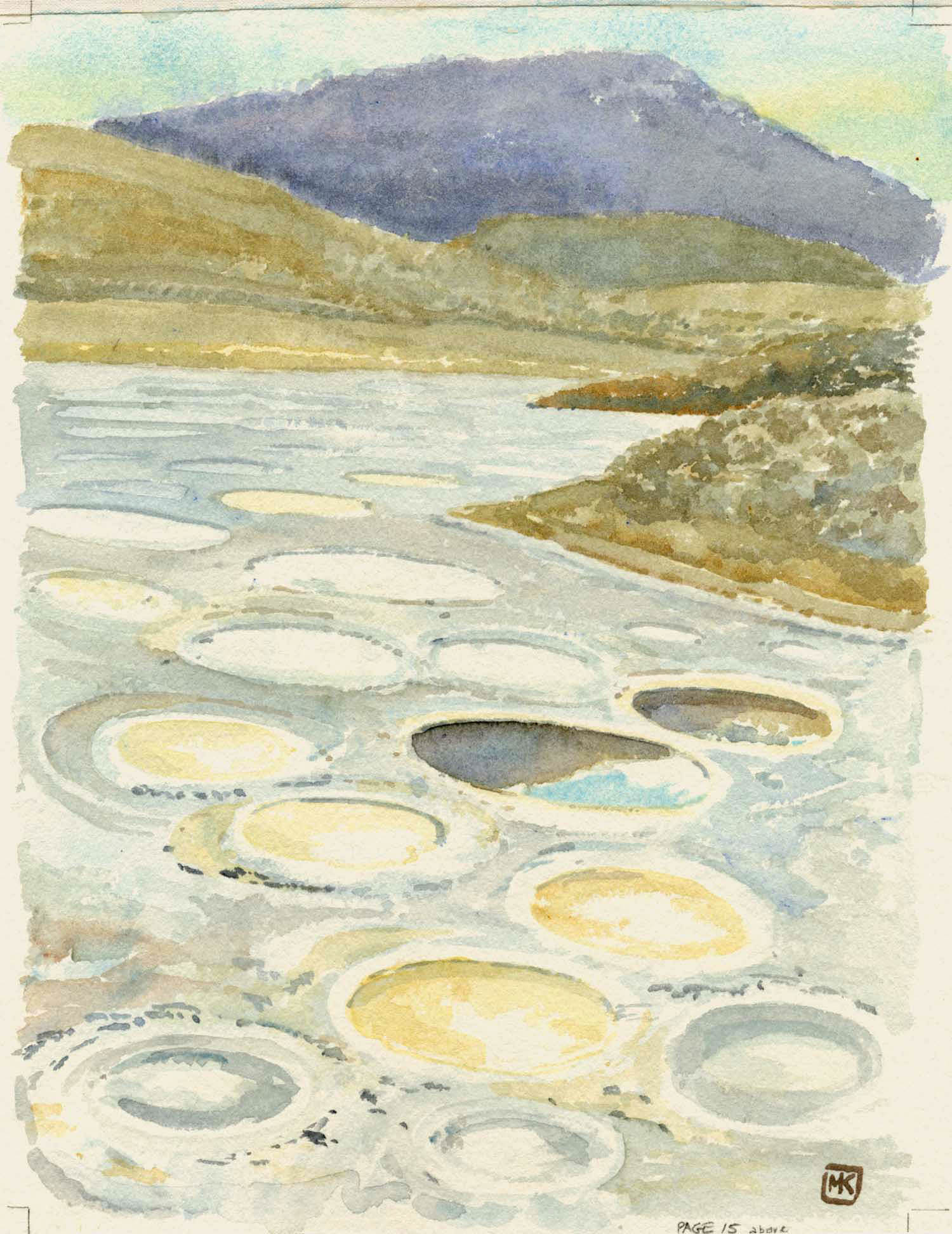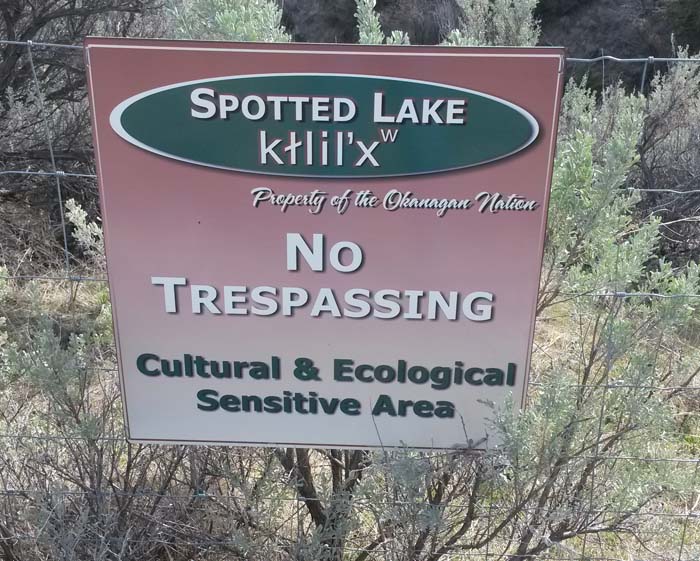Return to main Vanishing B.C. page Return to home page
This page last updated January 1, 2019
© Michael Kluckner

|
Spotted Lake, September 2000 –
the water in the "spots" reflects the hillside and the sky.
Spotted Lake, September 2001 – a much drier year, with only a small part of the lake still containing enough water to reflect the hills and the sky. Spotted Lake can be spotted from Highway 3, 8.8 kms (5.5 miles) west of Osoyoos. It is a rare natural phenomenon covering 15.2 hectares (38 acres), containing one of the world's highest concentrations of minerals: magnesium sulfate (epsom salts), calcium and sodium sulfates, plus eight other minerals and traces of four more, including silver and titanium. As the summer progresses the lake dries out, its mud forming into white, pale yellow, green and blue circles depending on its mineral composition. Known as Kliluk to the natives of the Okanagan Valley, the lake is a sacred and culturally significant site whose potential for commercial exploitation recently generated much controversy. The therapeutic quality of the waters has been known for millenia--the Osoyoos Chamber of Commerce website offers a legend wherein a truce was declared in a battle to allow both warring tribes to tend to their wounded in the lake. The minerals were also easily harvested during the First World War, with Chinese labourers skimming up to a ton a day of salts from the surface of the lake and shipping them to munitions factories in eastern Canada. Although sacred to the Indians, the lake was not on their reserves; it was on the ranch owned by the Ernest Smith family of Osoyoos for about 40 years. Along the edge of the lake today, surrounded by sagebrush and dog roses, there is a ruined wooden building, perhaps from the 1950s or 1960s, on which a painted sign advertises "Information - Gifts - Souvenirs." Salt-encrusted pilings extend into the lake from several points. In 1979, Ernest Smith attempted to have the site rezoned to permit the construction of a spa facility. The Okanagan elders and chief opposed the application on the grounds that Spotted Lake has historically been sacred to the Osoyoos Indian Band. The opposition eventually led to politicians including Bill Vander Zalm, then BC minister of municipal affairs, and John Monroe, the federal minister of Indian affairs, supporting the natives. Monroe made a commitment to the Okanagan people to contribute funds to buy Spotted Lake for their use and mandated a negotiating team to approach the owners about selling the property. The site was appraised twice at an amount lower than the $500,000 that would be available if the purchase were approved by Indian Affairs. The Okanagan Nation Alliance, comprised of First Nations from Osoyoos to Merritt, believed reasonable offers were made, but the Smith family refused to sell, so the government put the negotiations on hold. Nearly 20 years later, in November 2000, the descendants of the late Ernest Smith had the development barriers on Spotted Lake lifted by the Supreme Court, and had mud extraction costs put out for public tender with the intention of mining at least 10,000 tons of mud from lake for spa purposes, allegedly in California. The Okanagan Nation Alliance was given a deadline of April 13, 2001, to come up with the money for purchase; that deadline was extended, and a deal was finally made late in October, 2001, when it was announced that the Federal Government and local natives had bought 22 hectares of land surrounding Spotted Lake. The Indian Affairs Department paid $705,000 towards the property, and the Okanagan Nation Alliance paid the remainder of the $720,000 purchase price. The chronology above was developed from reports in the Osoyoos Times by reporter Wendy Johnson, and on CBC radio's Almanac program by Mark Forsythe. Does anyone have any recollection of the "spa" operations at the lake: was there an admission fee? What souvenirs and gifts were sold? Mud? Did people come and camp on the shore? Note from Scott Belgatty, 2010: Spotted Lake is owned by the Crown and 25feet above high water line all around the lake (the whole shore is crown) – all lakes and creeks in Canada are Crown without exception - the definition of a Crown waterway is - "a site with any measurable water that exists for 7 days or more per 10 years , flowing or not is Crown - and the 25ft exclusion zone next to the site."Update 2019:  |
